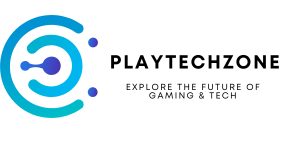As an expert in the tech community, I’m often asked, “What exactly is an algorithm?” It seems like a simple question, but the answer is surprisingly complex. The word “algorithm” gets thrown around a lot, often with little understanding of its true meaning. This lack of clarity can have real-world consequences, especially as we grapple with the increasing influence of algorithms on our lives.
The Elusive Definition of an Algorithm
At its core, an algorithm is a set of instructions for completing a task. Think of it like a recipe: you have your ingredients (input), a set of steps (the algorithm), and a final dish (output). This definition encompasses everything from simple mathematical formulas to complex machine learning models.
Harold Stone, in his 1971 computer science textbook, defines an algorithm as “a set of rules that precisely define a sequence of operations.” While technically accurate, this broad definition encompasses such a wide range of processes that it becomes almost meaningless in a practical sense.
This ambiguity becomes problematic when we consider the implications of algorithms in areas like healthcare, finance, and criminal justice. When algorithms are used to make decisions that significantly impact people’s lives, we need a shared understanding of what constitutes an algorithm and how to evaluate its potential consequences.
Algorithms vs. Models: Untangling the Terminology
Further complicating matters is the frequent conflation of “algorithm” with “model.” In the realm of machine learning, the algorithm refers to the set of instructions a computer uses to learn from data. The resulting output of this learning process is the model, which represents the learned patterns and relationships within the data.
For instance, a machine learning algorithm might be used to analyze a dataset of customer purchase history. The algorithm learns from this data to identify patterns and predict future purchases. The resulting model, then, is the set of rules or equations that encapsulate this learned knowledge and can be used to make predictions about new customers.
However, in many domains, the term “algorithm” is used interchangeably with “model.” This blurring of terminology can lead to confusion, particularly when discussing the ethical implications of these systems.
The Stanford Vaccine Algorithm: A Case Study in Ambiguity
A prime example of this ambiguity played out recently at Stanford Medical Center. The hospital faced criticism for its COVID-19 vaccine allocation system, which prioritized senior administrators over frontline healthcare workers. Stanford attributed this flawed prioritization to a “complex algorithm.”
However, upon closer examination, it became clear that this “algorithm” was not a sophisticated AI system but rather a simple set of rules devised by a committee. These rules, while technically qualifying as an algorithm, lacked the complexity and data-driven nature typically associated with the term.
This incident highlights the need for greater precision when discussing algorithms, especially when their deployment has significant societal implications.
Shifting the Focus from Design to Impact
Rather than getting bogged down in semantic debates about what constitutes an algorithm, we should prioritize evaluating these systems based on their impact. Whether we’re talking about a simple formula or a complex neural network, what matters most is the potential for harm.
This focus on impact aligns with existing frameworks in other fields. In cybersecurity, the DREAD framework emphasizes quantifying the number of users affected by a vulnerability. Similarly, human rights and sustainability assessments often center on the potential consequences of actions or policies.
Several organizations are already developing impact assessment tools specifically for AI systems. For example, Canada’s Algorithmic Impact Assessment uses a questionnaire to assess the potential impact of an algorithm on various factors, including fairness, transparency, and accountability.
Algorithmic Accountability: A Shared Responsibility
Ultimately, the term “algorithm” should not be used as a shield to deflect responsibility. The humans who design, develop, and deploy these systems must be held accountable for their impact. By shifting our focus from technical definitions to real-world consequences, we can foster a more responsible and ethical approach to developing and deploying algorithms.
Resources for Further Exploration
- The Algorithmic Accountability Act (HR2291): This proposed legislation aims to establish guidelines for assessing and mitigating the risks associated with automated decision systems.
- The DREAD Framework: A widely used framework for assessing security threats, with a focus on quantifying potential impact.
- Canada’s Algorithmic Impact Assessment: A tool designed to help government departments assess the potential impact of their AI systems.
By embracing a more nuanced understanding of algorithms and prioritizing their real-world consequences, we can harness the power of these technologies while mitigating their potential harms.
